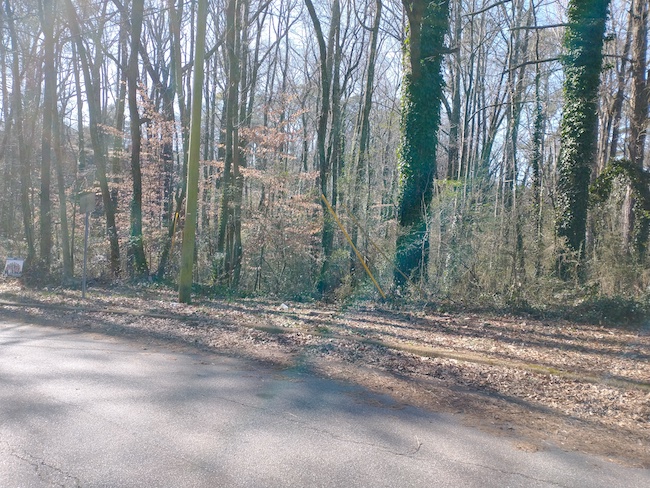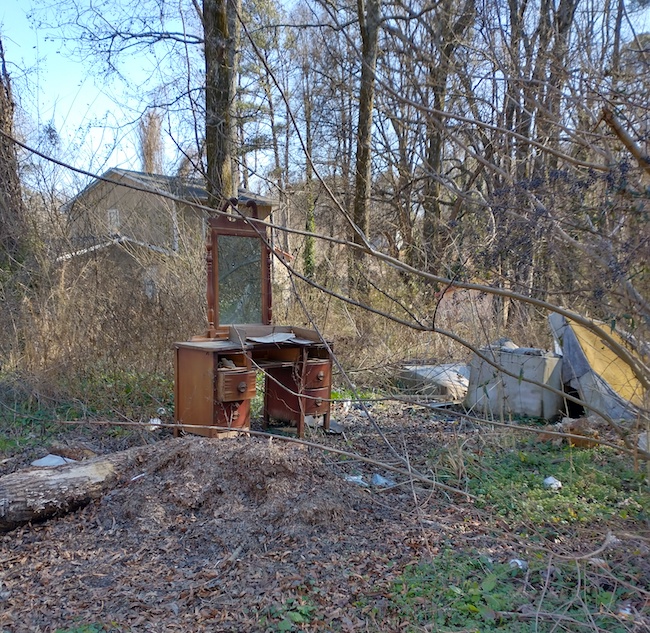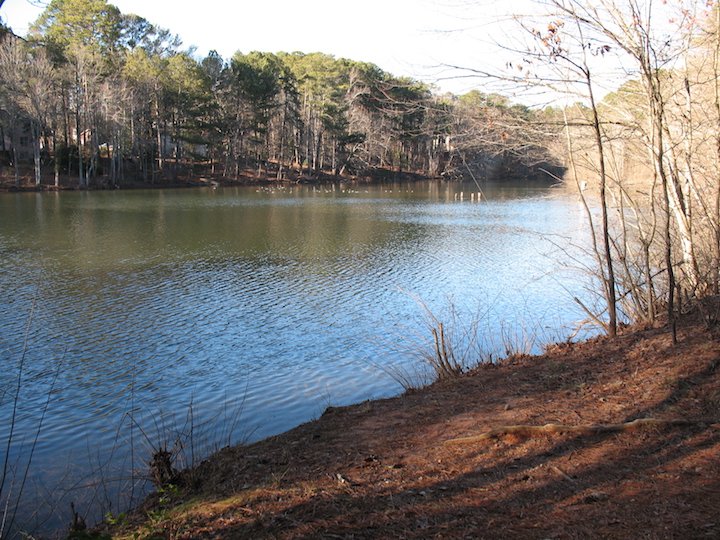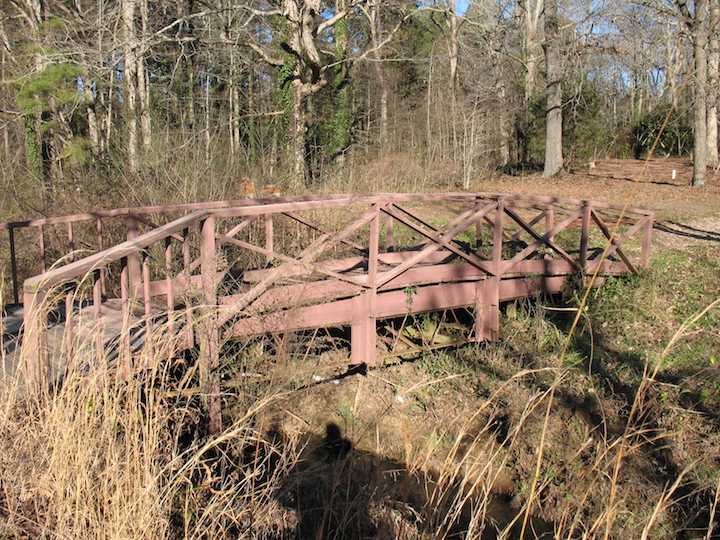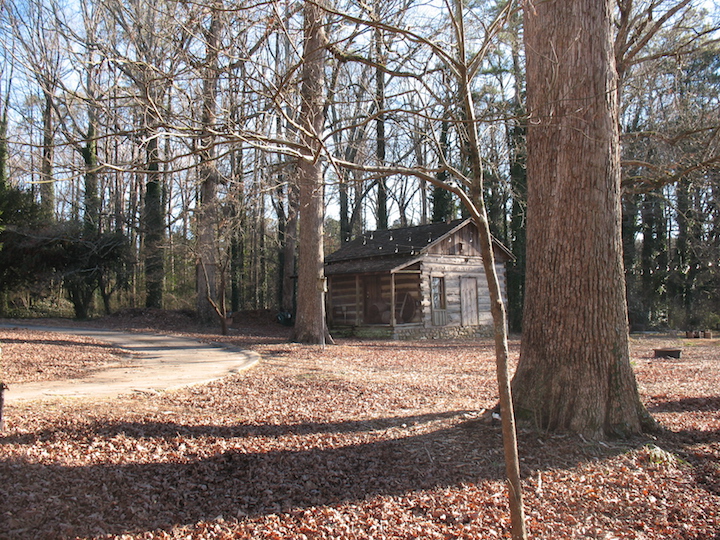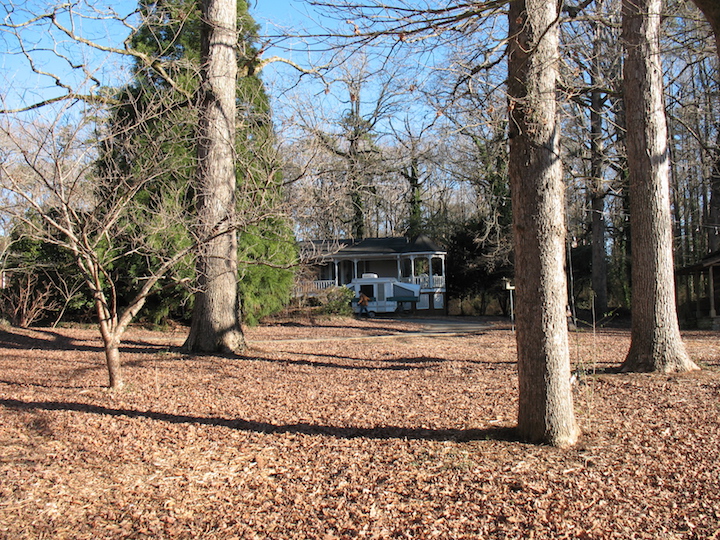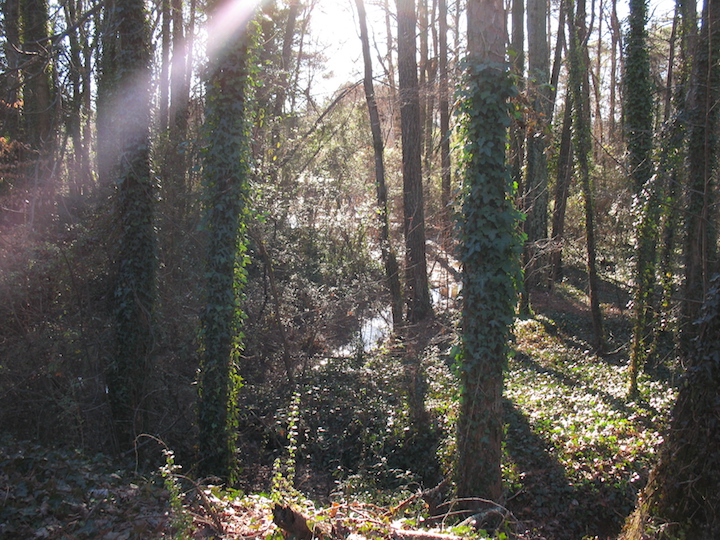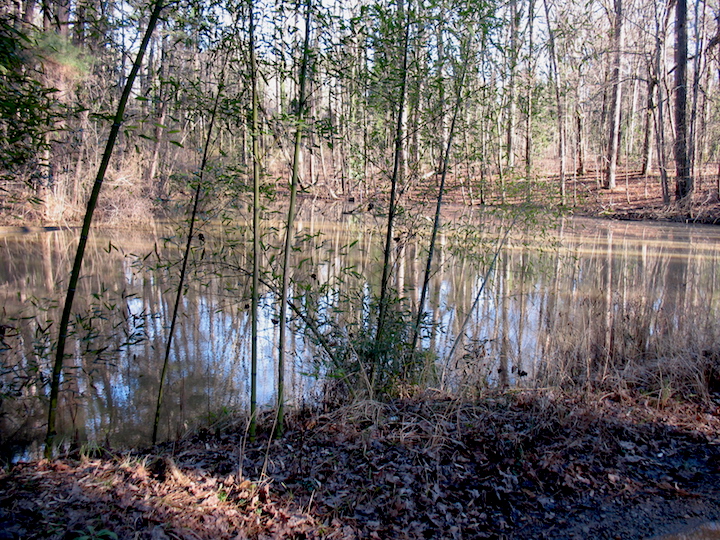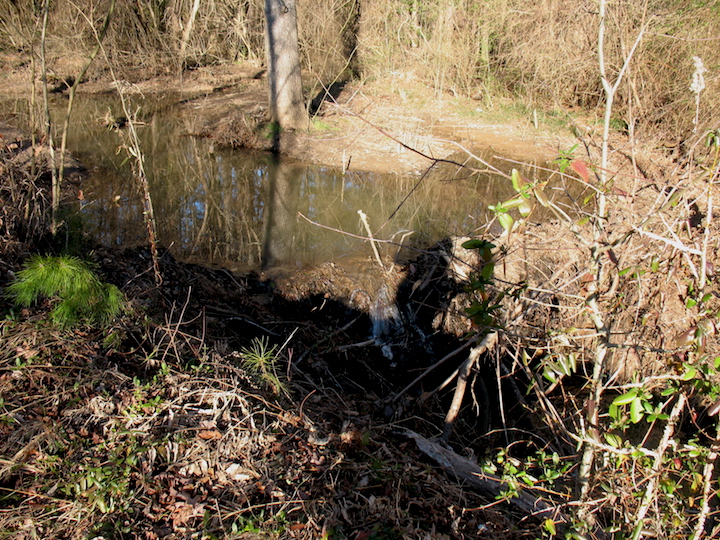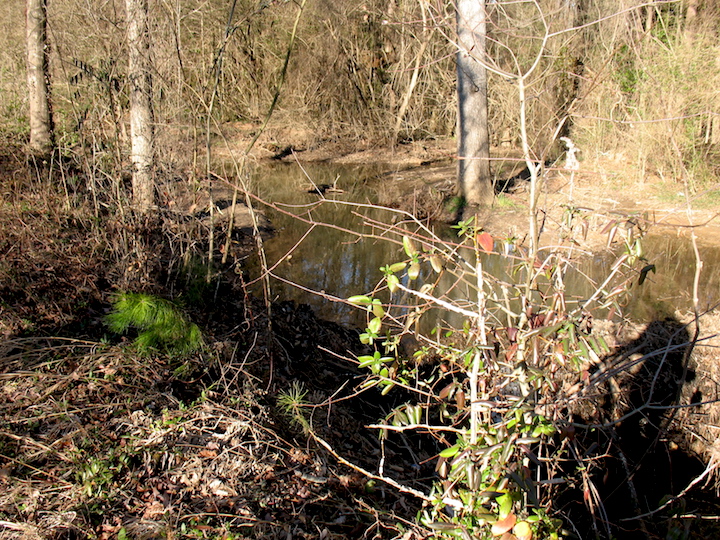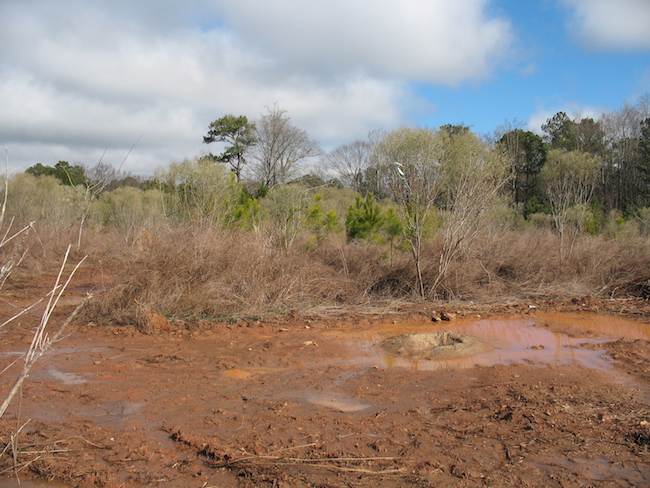Navigating the perils of urban growth and development often means walking sites that are currently fully wooded or contain parcels of beautiful old growth forests. Single family lots in the metro Atlanta area may have significant specimen trees that are hundreds of years old. This post is about two separate large tracts that I walked recently with allies who helped my neighborhood challenge annexation last year from the then Clarkston mayor, who is now a DeKalb commissioner. Ironically, his new role is to protect resources (land) in our overlay district and prevent annexation into a new cityhood.
Because the state of Georgia was developed relatively late compared to the northeast, we have more tree canopy and larger areas of undeveloped land. Here in DeKalb County, primarily agrarian until the 1960s, many streams and lakes contribute to topographical challenges for development. However, that hasn’t stopped developers from buying up cheap and often difficult land.
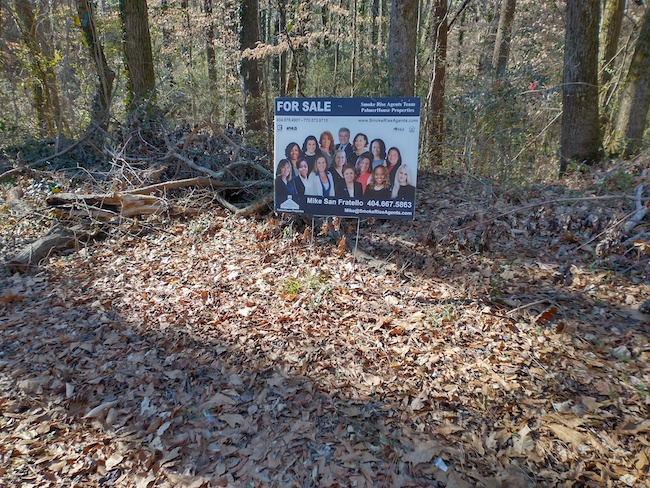
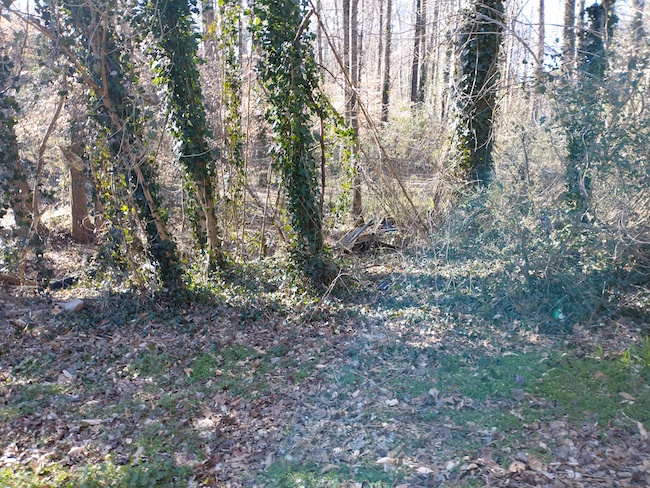
Activists tend to call on each other for help to protect their environments, and in turn their communities, from bad rezoning efforts or rookie developers. Paradoxically, inexperienced developers tend to be the worst for degrading the land and/or devaluing adjacent properties. The good guys know to follow county or city ordinances and are more likely to respect the community’s concerns. They prefer to build good will, which enhances their reputations. Not often is that a win-win, but with experienced folks on the community’s side who understand zoning and code, the environment and our neighbors will have a better outcome.
The city of Atlanta has NPUs (neighborhood planning units) of citizen advisories that function as a first line of defense for neighborhoods under pressure to develop or increase density through zoning. When I lived in PA outside Philly, the thousands of municipalities in the state had city councils and historic commissions that functioned similarly. DeKalb County employs Community Councils with commissioner appointed member volunteers who are offered free training to learn rudimentary urban planning and the role that zoning plays in land use.
About 4 large lots that total +35 acres on Norman Rd. in unincorporated Stone Mountain, close to Clarkston are being considered for rezoning from R-85 for rental single family homes. I only found out about it recently from a friend who lives near another development that I helped to challenge a couple of years ago. We weren’t successful, the developer requested annexation from DeKalb County into the City of Clarkston, which has less stringent regulations and ordinances than the county. He won, the City under their then mayor caved to his rezoning and density requests despite their Planning person’s opposition; the community lost another fully wooded 6 acre tract on a stream buffer tributary of Snapfinger Creek.
Unusually, the attorney’s letter for the Norman Rd. pre-application community meeting does not state the proposed rezoning designation. The property is owned by heirs of the late Hugh Spivey, the lake’s namesake. A small contingent of neighbors were first made aware of the potential sale late last year. Rentals are notoriously iffy for residential areas, since they tend to devalue surrounding properties and can become a hazard through neglect and turnover. Details have to be specific about maintenance, management, etc. Most upscale neighborhoods prohibit rental properties in their midst, which states the obvious.
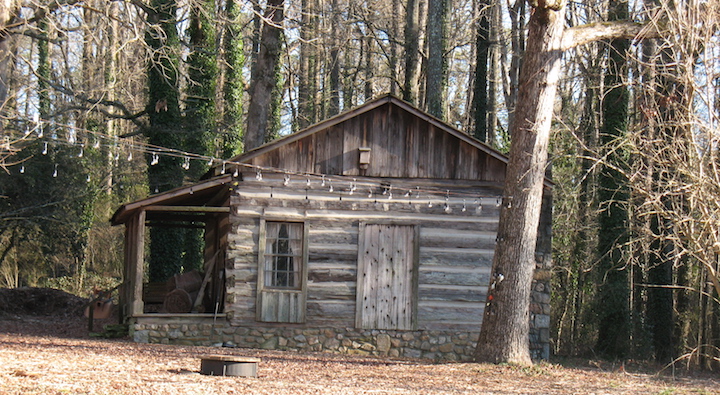
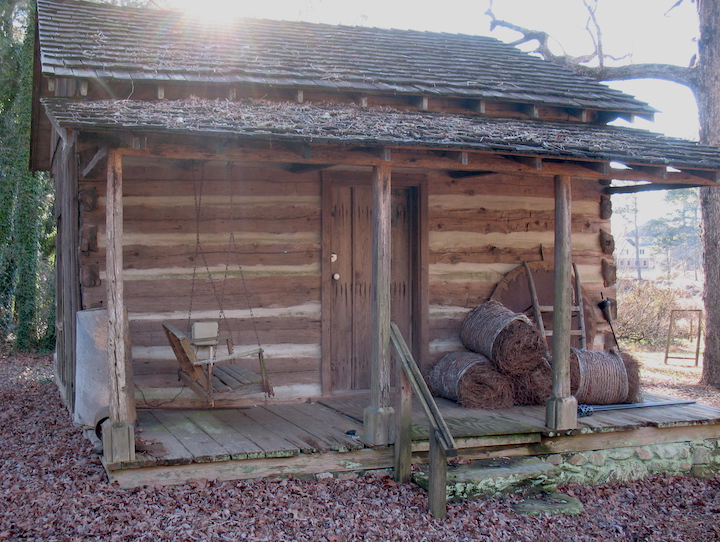
22 acres off Northern Ave. between Sandy Woods Lane and Indian Creek Way is being targeted for rezoning from R75 to RSM in order to build about 150 single family units and townhomes. I’d met a few of the neighbors who live along Northern in last year’s annexation meetings for my overlay district and we connected again in early December, after a community meeting about this project. One of those neighbors was also invited to walk the site last weekend, an artist who’s been living in Atlanta since the mid-late 1970s like me. Noting mutual friends and acquaintances, we discovered that we’d also participated in the same large group exhibits back in the 1980s, during Atlanta’s early Mattress Factory and Biennale shows. She had a Blue Rat gallery t-shirt on that day, a now defunct gallery where I had exhibited. Artists are no brainers as environmental activists.
The community is united in opposing the rezoning and the number of new units. Increased traffic on a narrow collector street, floodplain and drainage issues that will most likely affect adjacent properties and the inappropriateness of the project in a purely low density residential area are just some of the opposition’s concerns.
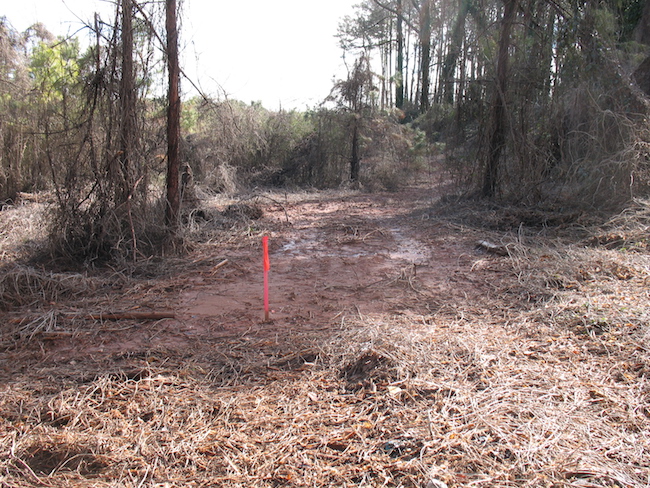
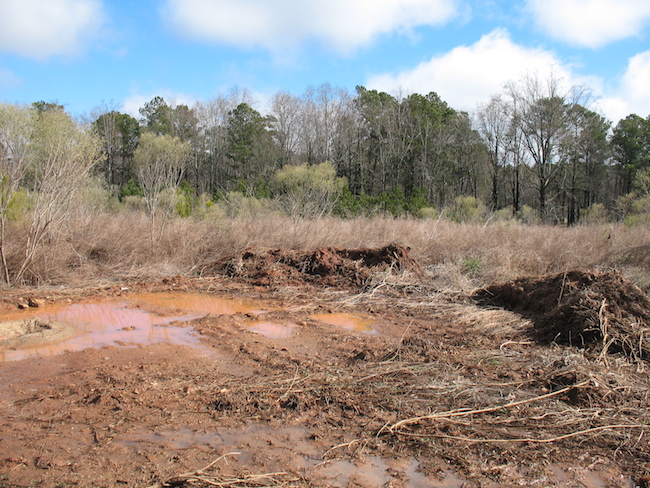
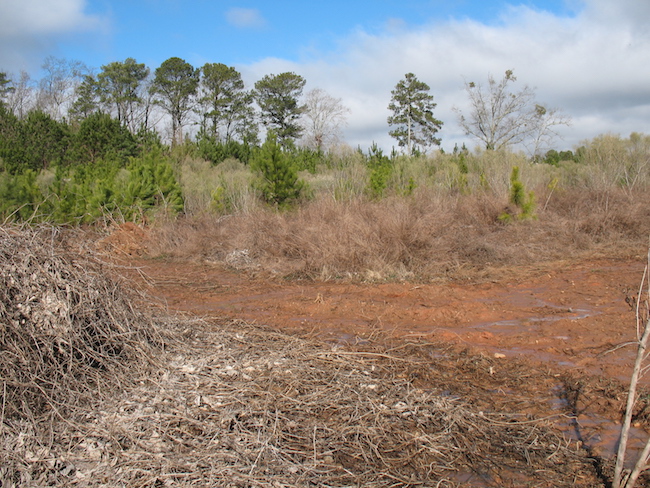
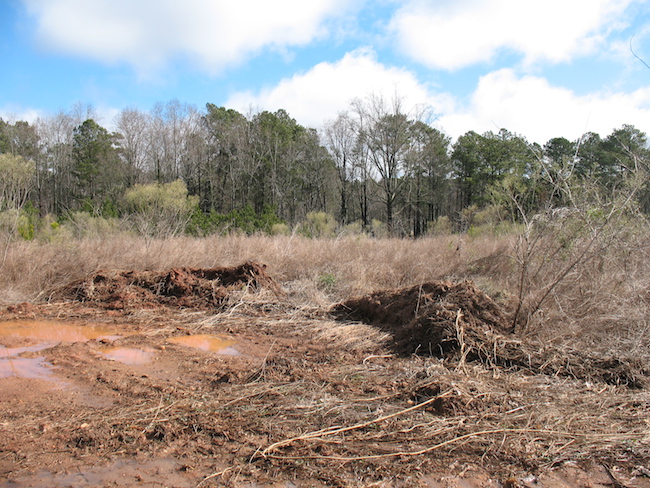
My work always relates to these land use issues, whether before the disturbance begins or afterwards. Recently on a walk when I had no expectation of inspiration, I stopped at the small detention pond behind me to sketch the cattails and long grasses growing in the pond. I had advised the developer back in 2015 to plant the grasses to absorb runoff, luckily she listened. Verticals, browns and ochres inform a new painting and the impetus is on to stretch more canvases.

